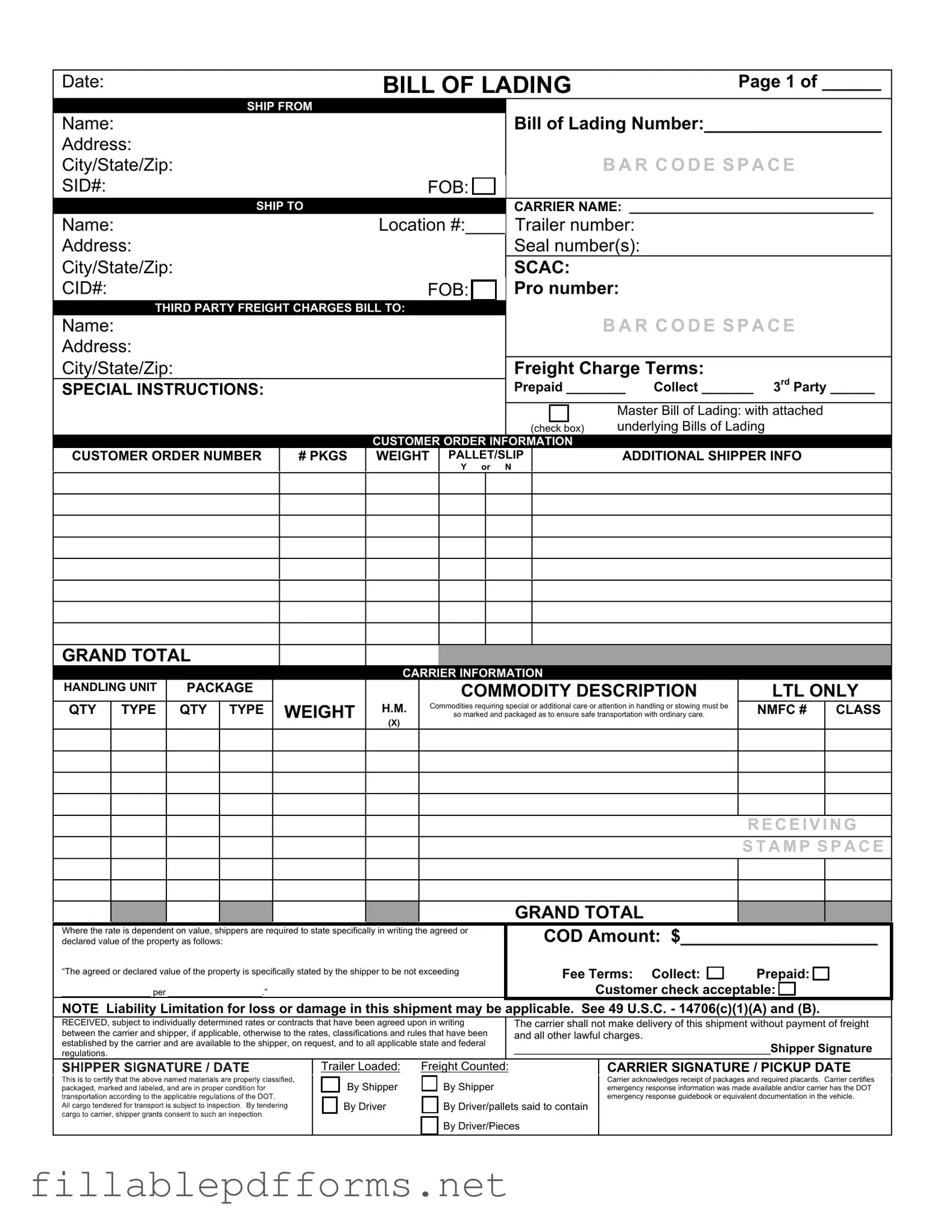The Bill of Lading with a Supplement form plays a crucial role in the shipping and transportation industry, serving as a vital document that outlines the terms of the shipment between the shipper and the carrier. This form not only provides details about the goods being transported but also specifies the responsibilities and liabilities of each party involved. It typically includes information such as the names and addresses of the shipper and consignee, a description of the cargo, and the shipping route. Additionally, the Supplement section allows for the inclusion of extra terms or conditions that may not be covered in the main body of the Bill of Lading. This flexibility is essential for addressing specific requirements or unique situations that may arise during the shipping process. Furthermore, the Bill of Lading with a Supplement ensures that all parties have a clear understanding of their obligations, which can help prevent disputes and facilitate smoother transactions. By providing a comprehensive framework for the shipment, this form is indispensable for ensuring that goods are transported safely and efficiently.
